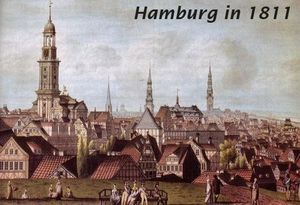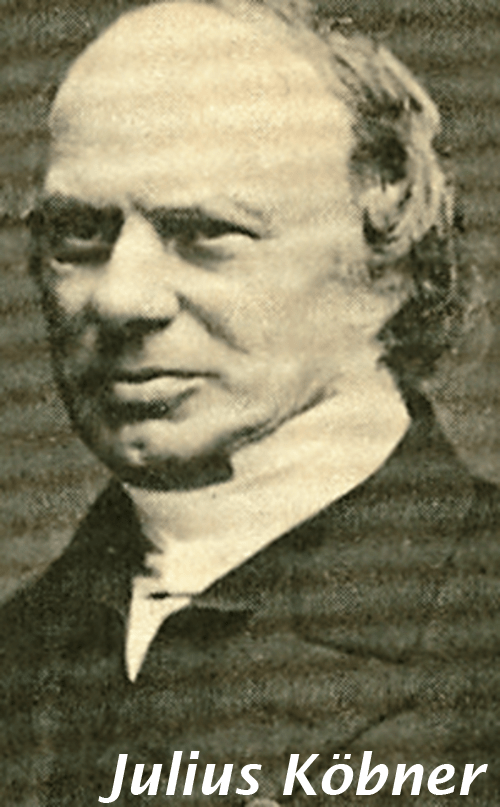George Scott (1804-1874)
George Scott was a key figure in the nineteenth-century evangelical awakening in Sweden.
Margaret Scott, wife of Tailor Robert, gave birth to George on 18 June 1804.The Scott family belonged to a Methodist church, but later joined the Church of Scotland. Scott’s Presbyterian upbringing left an indelible impression on him.
Leaving school at the age of twelve, he took up an apprenticeship in an accountancy firm in Edinburgh and spent some years plying this trade at a number of firms in the city. He was saved at the age of 23 at a Methodist meeting.
He later wrote: ‘I found power in that meeting to lay hold on Christ as my Redeemer. I felt him precious; I could without hesitation have declared then that the Lord was my portion, my God, my Saviour; that Jesus loved me and gave himself for me’.
After his baptism, he declared: ‘This commences a new era. I am determined, by God’s grace, to take Jesus as my only sufficient Saviour, the Bible as my rule of life, the people of God as my chosen companions, and the kingdom of glory as my eternal home’.
Preparation
George was for a time attached to the Edinburgh Philanthropic Society. The work of the society covered the poorer areas of Edinburgh. It organised Sunday schools and spread the gospel by various means. The society was an offshoot of the labours of Robert and James Haldane.
Scott soon felt a strong conviction to preach and was accepted as an itinerant preacher in the Methodist circuit. This conviction initially turned to doubt and agitation of mind. One day, on his way to preach in the open air, he was so full of doubt that he was on the verge of cancelling the engagement.
By then, it was too late. But God blessed and confirmed his calling that day with far-reaching consequences. He preached to 400 people and said afterwards, ‘Five adults declared their desire to flee from wrath to come. Glory be to God! I have just received his testimony and command to go forward’.
Scott was aware of his limited education, but his focus was on the Scriptures, of which he read seven chapters a day. His great interests after the Bible were the works of John Wesley and Adam Clarke’s Christian theology. He once said his ambition was to follow in the footsteps of John Wesley.
The biographies of David Brainerd and Henry Martyn also captured his imagination. He absorbed Richard Baxter’s Saints everlasting rest and Reformed pastor, William Sprague’s Lectures on revivals, Philip Doddridge’s Rise and progress of religion in the soul and William Wilberforce’s Practical Christianity.
Church history was on the agenda and he broadened his thinking with studies in Greek, Geography and, later, Swedish history. Later, he became skilled in the Swedish language.
Samuel Owen
At this time, British industrialist and Methodist Samuel Owen was a successful entrepreneur living in Stockholm. He had founded an engineering firm and foundry where he manufactured steam engines. His factories were manned by a British workforce.
Owen requested the Methodist Missionary Society in London to send a missionary to Sweden. The first attempt ended in failure, so Scott was duly ordained and sent as a replacement to Sweden in 1830, with his family.
Scott entered the employment of Samuel Owen as family chaplain, and chaplain to Owen’s employees. He and his family were accommodated for a time in the Owens’ spacious family home and enjoyed their warmth and generosity, becoming a much loved figure in the household.
Although Scott’s appointment was as chaplain, this didn’t prevent him from engaging in a wider ministry. A rent-free pavilion in the centre of Stockholm was provided for him to preach in. The first meeting didn’t exactly set Stockholm on fire, since only two families turned up!
Progress was slow, but it didn’t dampen his spirit. In a short space of time, he was attracting English-speaking Swedish people. Then, in 1831, just a few months after his arrival in Sweden, Scott began to preach in Swedish. From that point, his ministry took off.
Awakening
The 1726 Act of Uniformity outlawed the Swedish people from worshipping in non-Lutheran churches; only foreigners were allowed to worship in chapels of their own tradition. By the first part of the nineteenth century, superstition lay like a dense fog over Sweden, with the sunlight of the gospel needed to penetrate the darkness.
The spiritual life of the Lutheran Church had long stagnated, leading to widespread ignorance of the Scriptures. It was against this backdrop that God blessed Scott’s ministry, sending an awakening to Stockholm. New ground-breaking ventures followed this, which impacted all Sweden.
After a while, the Scotts were able to own their own home and there Methodist classes were held twice a week. These were overwhelmingly popular with Swedish folk. Although Scott’s successful ministry attracted the opposition of the ecclesiastical authorities, such opposition only served to promote the work.
The Evangelical Society and Bible Society in Sweden, initiated by John Paterson, had lost their vigour, but Scott rekindled the dying embers of these noble institutions.
News of a resurgence in the Evangelical Society reached Ebenezer Henderson in London, who was overjoyed (see March ET’s article on John Paterson and Ebenezer Henderson).
He and Paterson maintained a lively interest in all that was happening in Sweden. Henderson was the Secretary of the Religious Tract Society and had nine tracts translated by Scott printed and sent to Sweden. At the same time, the Bible Society in London sent Paterson to investigate the recent developments in the Swedish Bible Society.
Receiving a glowing report, the society printed and supplied Scott with Swedish Bibles free of charge. With these Swedish Bibles and tracts, a new phase of ministry opened up for Scott. He set about Bible and tract distribution throughout the length and breadth of Sweden, picking up where Henderson and Paterson had left off in 1812.
In 1832 Scott held his first ever missionary prayer meeting. This proved so popular that regular meetings were held every Monday evening. These were the cradle from which the Swedish Missionary Society was instituted in 1835.
Temperance Society
When George Scott arrived in Sweden in 1830 the country was in the grip of alcoholism. Samuel Owen knew about the problem only too well, since he witnessed its ravages firsthand among his employees. He shared his concern with Scott, who played a leading role in the formation of a Temperance Society.
The then Swedish Crown Prince became closely associated with this society, and this was to open many doors of opportunity. The awakening and the Temperance Society went hand in hand in blessing and healing broken families.
George Scott pioneered a Sunday school movement in Sweden, as well as an infant day school. He started and edited a number of Christian periodicals. In all his labours, he was laying a firm foundation for future Swedish nonconformity and its blessing.
However, the Lutheran ecclesiastical authorities didn’t allow it all to pass unnoticed. Methodism was seen by them as a toxic poison that had to be purged away. Bishops and priests alike launched attacks on Scott, accusing him of being a heretic and urging that he be brought to trial.
The most vicious of the onslaughts was reserved for the media. ‘Methodism is permeated by conceit, fanaticism and heresy, conducted by idiotic, self-appointed preachers’, was the comment of one daily newspaper.
Voices against Scott were raised in the Swedish parliament, although Scott remained unmoved.
Hate campaign
This hate campaign reached boiling point with a play staged in Stockholm entitled The Jesuit. This play portrayed George Scott as a callous Jesuit priest, exploiting a lonely, rich widow. The actor playing Scott even attended chapel meetings to study his mannerisms!
The Jesuit brought howling ridicule from the audience. An angry mob attended the chapel on a number of Sunday nights, intent on creating trouble.
The final straw came on 20 March 1842 when such violence broke out at the chapel that Scott and his family were forced to flee to Britain. This episode has been described as one of the most shameful periods in Swedish church history.
This faithful and bold servant of God entered into glory in 1874, leaving a rich legacy of blessing in Sweden, and a figure in church history who deserves much further research and recognition. George Scott left, as part of that legacy, a rich collection of diaries, Bible studies, sermons and letters.
David Whitworth












